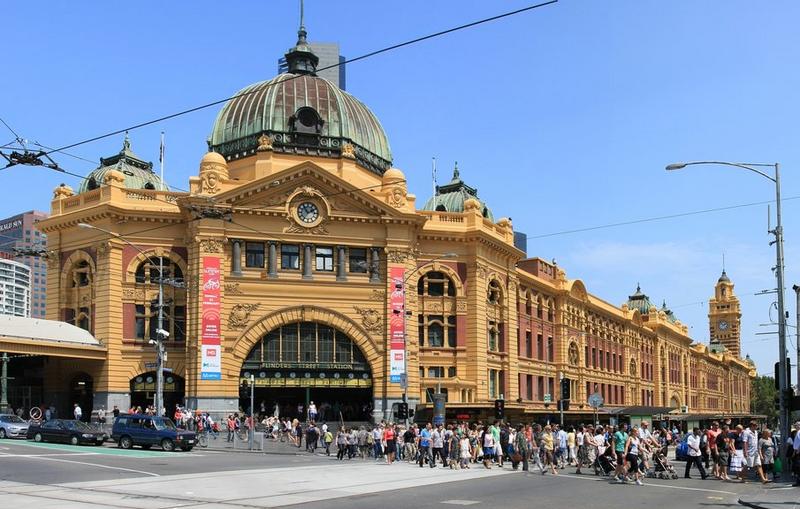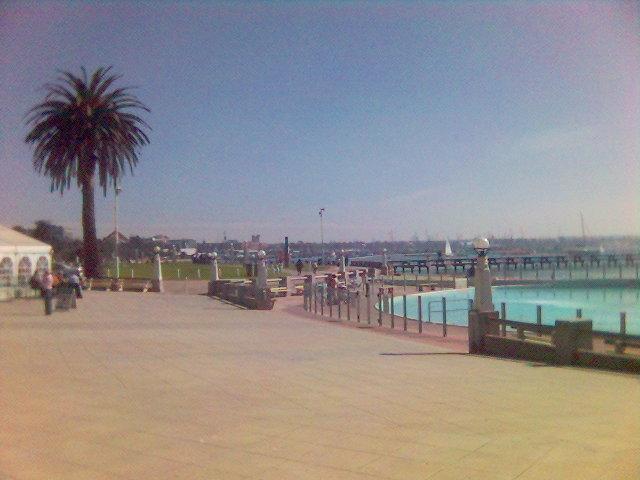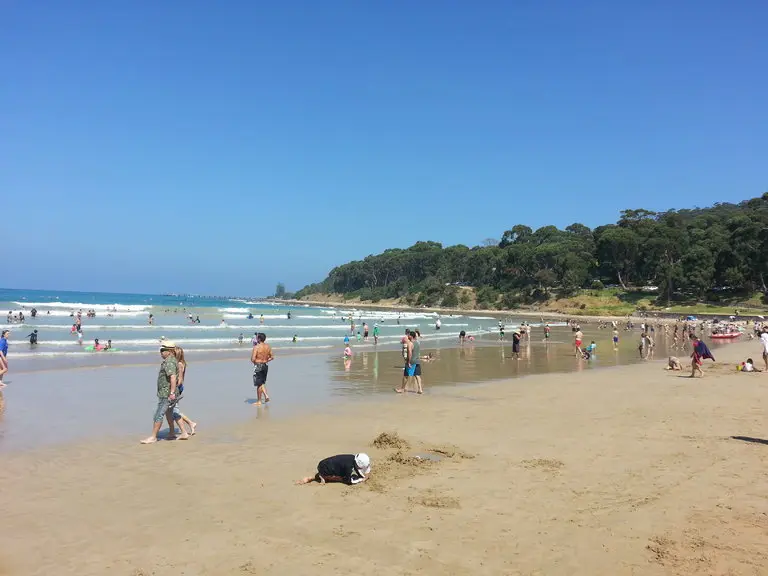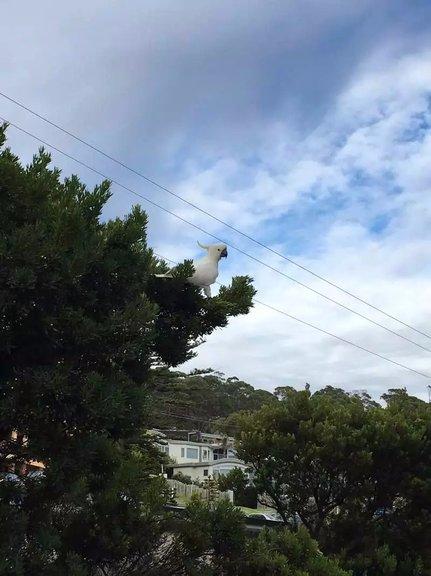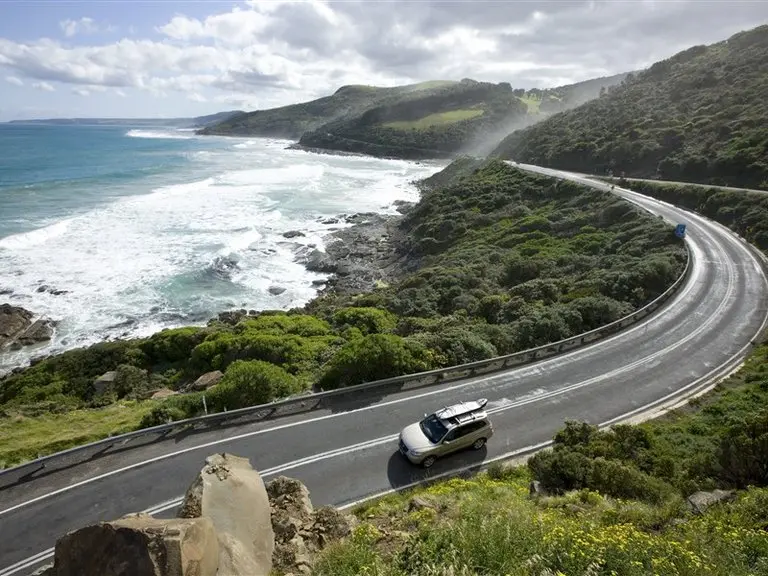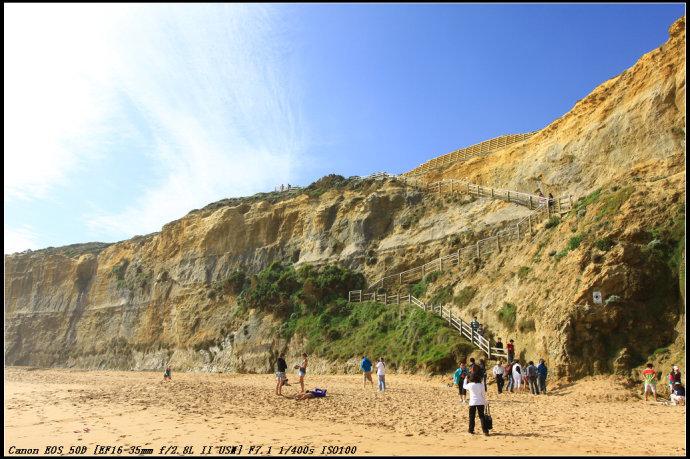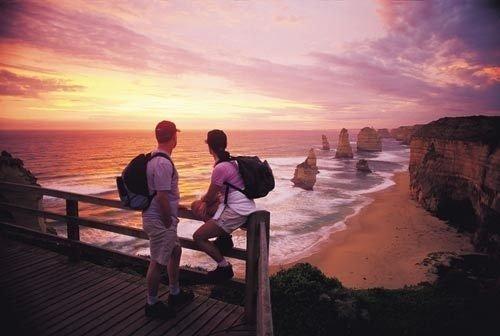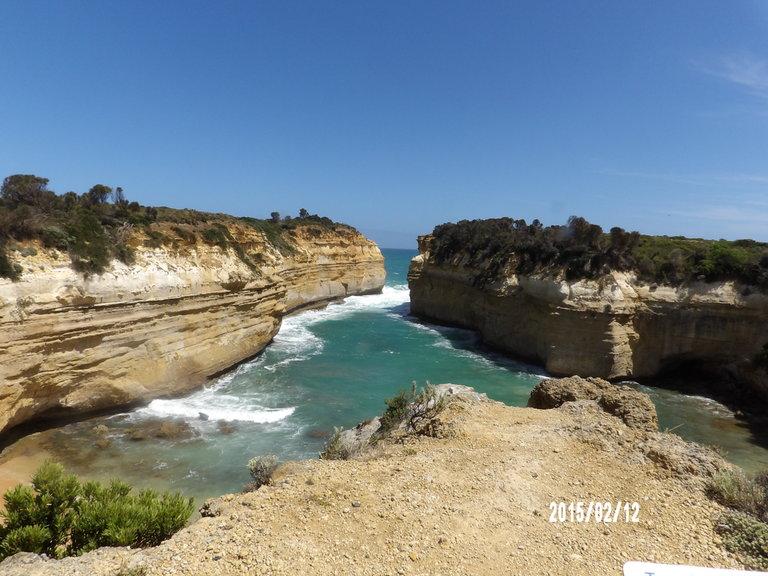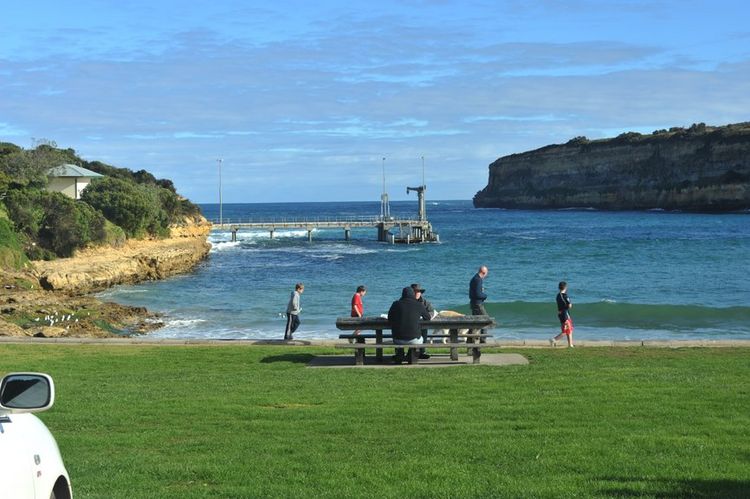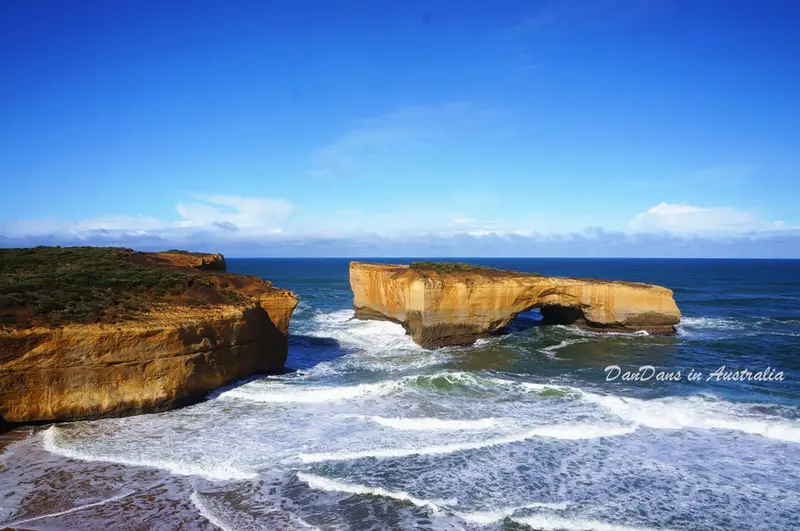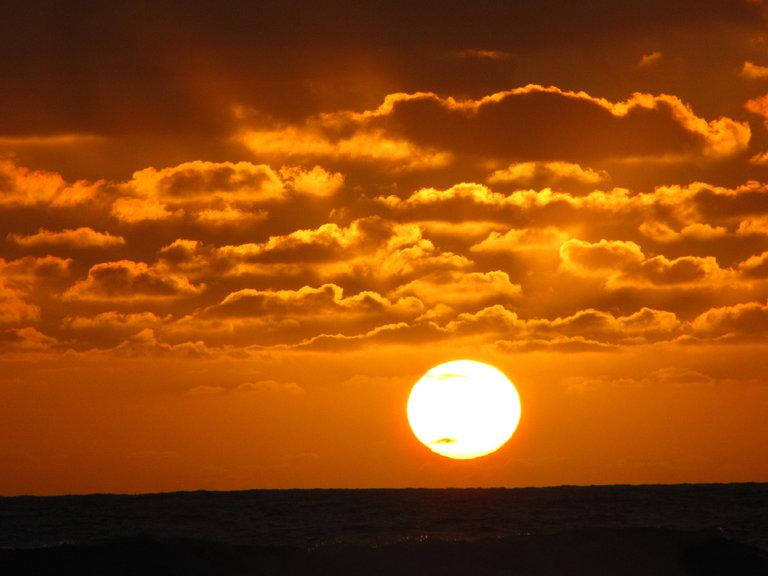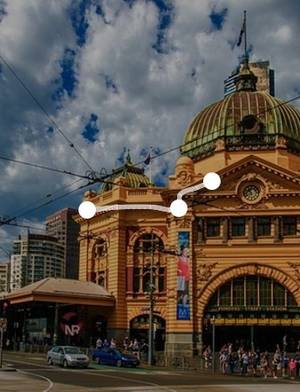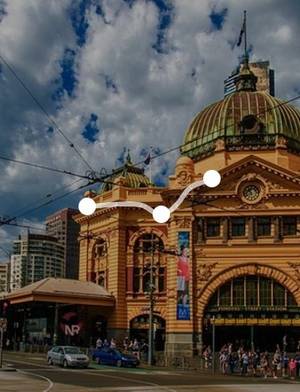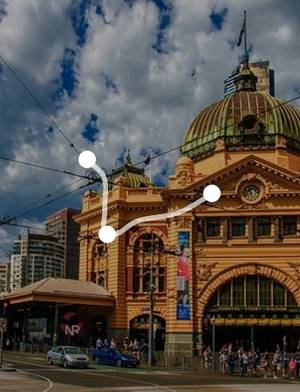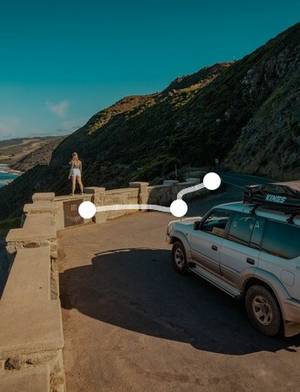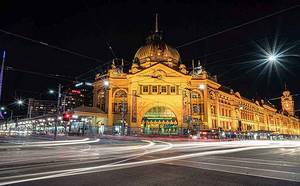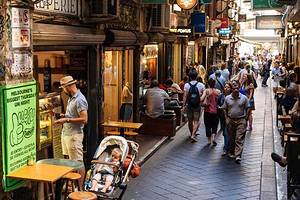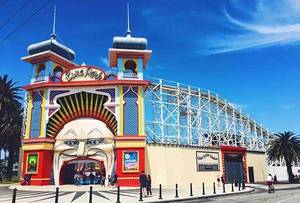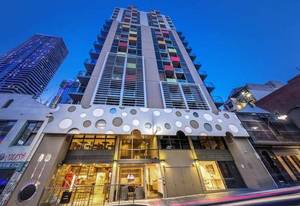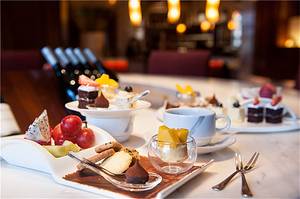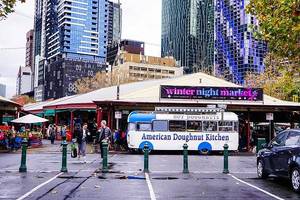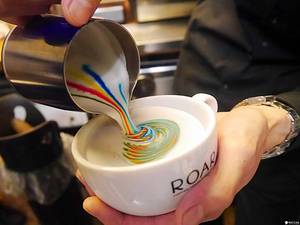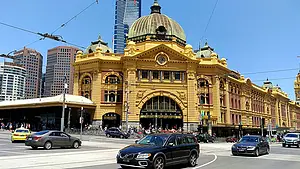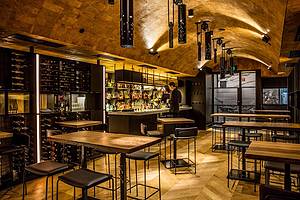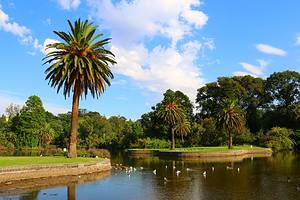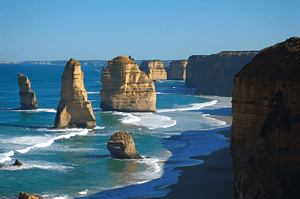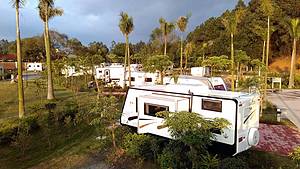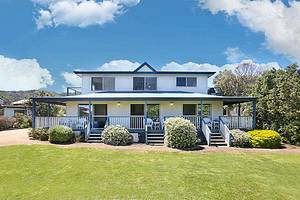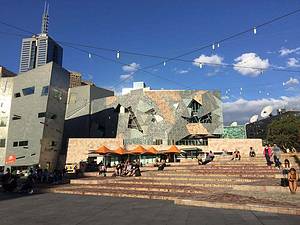Melbourne-Classic 3-day Great Ocean Road Tour
6 cities |
16 attraction(s) |
total distance 543
km
 TIPS
TIPS
Day1
Day2
Day3
Day1: Melbourne > Great Ocean Road > Lorne
6 attraction(s) ·
147 km
1
Flinders Street Station is the largest and busiest train station in Melbourne, Australia. It is a Victorian-era building and the first railway station in Melbourne. Located in the city center, directly opposite Federation Square, with St Paul's Cathedral nearby. It is a landmark building on Swanston Street and a popular meeting point for locals. The station's famous "meet under the clocks" refers to the large clock in front of the station. The entire station is made of yellow stone, with a distinctive bronze dome. At night, the station is illuminated by yellow lights, showcasing a different classical and magnificent Victorian architecture. It is worth visiting Flinders Street Station at night to experience its unique charm.
1
km
2
Whether you have just walked out of the train station, or taken a tram, or strolling along the streets, this church located at the corner of Flinders St and Swanston St is a must-see sight. Through the frequently opened heavy wooden doors, you can enter this Neo-Gothic building and admire the stained glass on every side.
76
km
3
The beautiful dolls, more than 100 in total, created by artist Jan Mitchell, are scattered along the coast of Geelong. Each doll has a special story behind it. Travelers need to have enough stamina and observation skills to not miss them. Along the coastline, there are over a hundred different themed wooden dolls. Originally, these wooden dolls were just boat latches made of wood. Later, artists used them as canvases, giving birth to various wooden dolls. There is one doll to commemorate a couple during World War II, as well as a volunteer infantry band. They are all very brightly colored and unique. I believe that visitors to this area will take photos for a keepsake.
1
km
4
Eastern Beach in Geelong is located in the northeast of the city center, facing Corio Bay and with a backdrop of greenery. It is a popular destination for both travelers and locals to relax and enjoy. Adjacent to the beach are various interesting sculptures, fountains, and a small Ferris wheel. There is also a playground and swimming pool for children to play. During sunny summer days, you can go swimming in the sea, have a barbecue or picnic on the beachside green, or dine at the various restaurants nearby. Most of the restaurants serve good food, and if you're not a fan of Western cuisine, you can also sit at a waterfront seat and enjoy a cup of coffee.
69
km
5
Long En Beach is very close to the main street, and you can see it as soon as you leave the Wei Line Bus Station. As one of the most famous resorts in Victoria, the beach is definitely a must-visit place for leisure. During the summer, many locals swim, surf, sunbathe here. There are also many people fishing at the mouth of the Esken River entering the sea. There are also many barbecue pits near the beach. When the weather is not hot in the summer evenings, you can buy fresh fish fillets from the seafood shops on the main street and have a barbecue here, which tastes great. The annual thousand-person swimming competition is also held here, and the spectacular scene is unforgettable when witnessed in person.
2
km
6
At the end of Lorne Town, there is a deep-sea pier that provides a view of the town and is also perfect for fishing. Adjacent to the pier is the renowned Lorne Pier Restaurant, where you can enjoy delicious oysters and lobsters.
Day2: Apollo Bay > Great Ocean Road > Port Campbell National Park > Great Ocean Road
6 attraction(s) ·
78 km
1
The Great Otway National Park stretches from the town of Torquay to Princetown, and extends northwards through the Otway hinterland to Colac. The park features a winding coastline, sandy beaches, rocky platforms, wind-swept heathland, towering forests, fern-filled valleys, majestic waterfalls, and peaceful lakes. It showcases the diversity of nature, with magnificent waterfalls and sparkling gorges. The park offers excellent camping grounds throughout, catering to families seeking a holiday spot for their camper vans, as well as those in search of solitude to gaze at the night sky.
65
km
2
Gibson's Steps is an 86-step staircase carved on a cliff, which leads from the top of the cliff to the beach. It is said that the steep staircase was originally carved by local indigenous people and later repaired and improved by an early immigrant named Hugh Gibson.
The Gibson's Steps are in a zigzag shape with a width of about 1 meter, only enough for one person to pass. At the end of the staircase, you can see the endless blue sea and two huge pillars (called Gog and Magog by the locals) behind them are cliffs almost perpendicular to the ground, making people marvel at the insignificance of human beings. Due to the turbulent waves here, swimming is not recommended, but it is a good place for fishing.
2
km
3
The Twelve Apostles is one of the most famous attractions on the Great Ocean Road, located in the Port Campbell National Park. These rock formations, initially consisting of thirteen different-shaped giant limestone pillars, resemble the twelve apostles following Jesus in the Bible, hence the name "The Twelve Apostles."
These pillars, about 45 meters high, have been eroded and weathered by the sea over time, and five of them have collapsed. However, this does not diminish the awe and admiration that this natural wonder brings. The best time to admire the Twelve Apostles is during sunrise and sunset. Standing on the lookout platform, overlooking the vast expanse of the sea, feeling the gentle sea breeze, one can't help but marvel at the power of nature's craftsmanship.
The park is free for visitors and has an information center providing cultural information and basic facilities such as toilets. There are numerous viewing platforms throughout the park, allowing visitors to experience the visual impact of this wonder from different angles. Due to the fragile geological structure of the limestone, there are clear signs in dangerous areas, and visitors are advised to stay away. The best time for photography is in the early morning and evening on sunny days.
5
km
4
Located in the Campbell National Park, just a 10-minute drive from the Twelve Apostles, this place has had over 600 shipwrecks of all sizes due to treacherous terrain and swift waves. One of the most famous maritime disasters is the wreck of the Loch Ard, where only a 15-year-old boy and a 17-year-old girl survived, while everyone else perished. Despite hopes for a happy ending, they went their separate ways and continued their lives in different countries, leaving a sense of melancholy.
On sunny days, the scenery here is beautiful, with the azure sea creating a sense of vastness. If it weren't for the thunderous sound of waves crashing against rocks, it's hard to imagine that so many lives had been stranded here. The best time for photography is during clear mornings and evenings.
1
km
5
Lock ard Gorge is located in the Campbell Port National Park, a 10-minute drive west of the Twelve Apostles.
8
km
6
Camperdown Bay, located on the western end of the Great Ocean Road in Victoria, Australia, is a natural gorge. The Campbell Port National Park was established in 1964 and named after Captain Alexander Campbell. It is a fascinating seaside village that can be reached either by the Princes Highway, 245 kilometers southwest of Melbourne, or via the Great Ocean Road, 281 kilometers in total.
Day3: Port Campbell National Park > Warrnambool > Melbourne
4 attraction(s) ·
318 km
1
The London Arch (formerly London Bridge) is also one of the most famous attractions along the Great Ocean Road. It is said that the huge arch-shaped rocks that now stand in the ocean were once connected to the mainland, and their shape is somewhat similar to that of the London Bridge, hence the name. In the early 1990s, the section of rocks connected to the mainland collapsed, so now travelers can only admire it from a distance.
There is an interesting story about the London Bridge. When the rocks collapsed, a couple was trapped on the arch-shaped rocks. Fortunately, they were rescued by a helicopter and were safe. After being rescued, journalists interviewed the couple and found that the woman was talkative while the man remained silent and evasive. Later, it was revealed that the man was on a trip with his mistress and he was intentionally avoiding the camera to prevent his wife from finding out.
13
km
2
The Bay of Islands is located between the Great Ocean Road and Warrnambool, and is one of the most worthwhile attractions to visit, apart from the Twelve Apostles.
48
km
3
The museum is the predecessor of the Warrnambool Lighthouse, which was established in 1858. Travelers can learn about the historical background of the Shipwreck Coast and the Great Ocean Road through exhibitions. In the evening, they can experience the tragic moments when ships sank through a large-scale audio-visual show, transporting them back over 100 years. This place is like a 19th-century town, where travelers can personally experience the maritime history of this town. Flagstaff Hill Maritime Village in Warrnambool is a must-visit place, acclaimed with four Victorian State Tourism Awards and multiple Museums Australia Awards.
258
km
4
With over 12,000 species of plants, it is more accurate to say that it is Melbourne's most "luxurious" garden. The botanical garden is located on the beautiful Yarra River, where exotic flowers and plants from Australia and around the world thrive. You can take a stroll along a dirt road through a small patch of pristine rainforest, or have some fun with a frisbee on the vast lawns scattered throughout. There is also a 4-kilometer running track that runs through the garden, and you can even spot eels and black swans in the lake.
